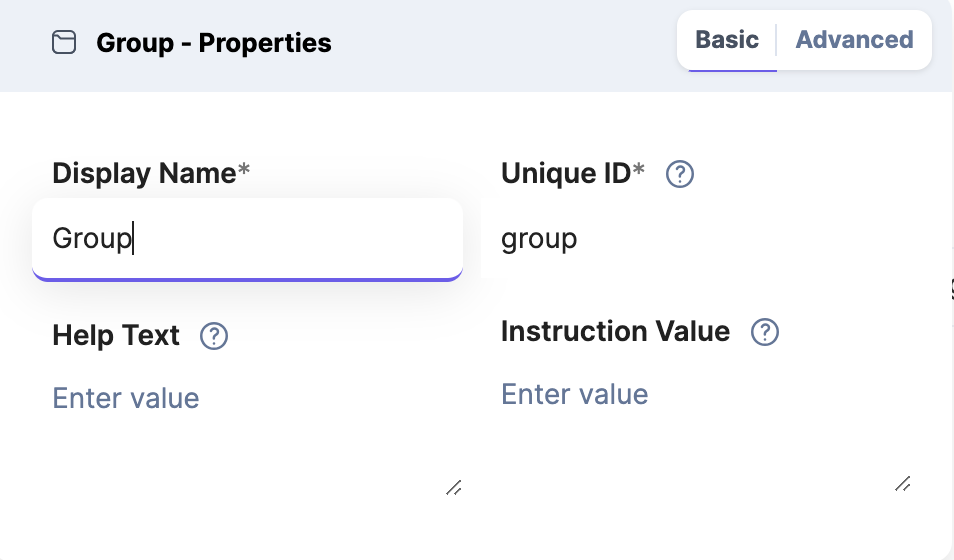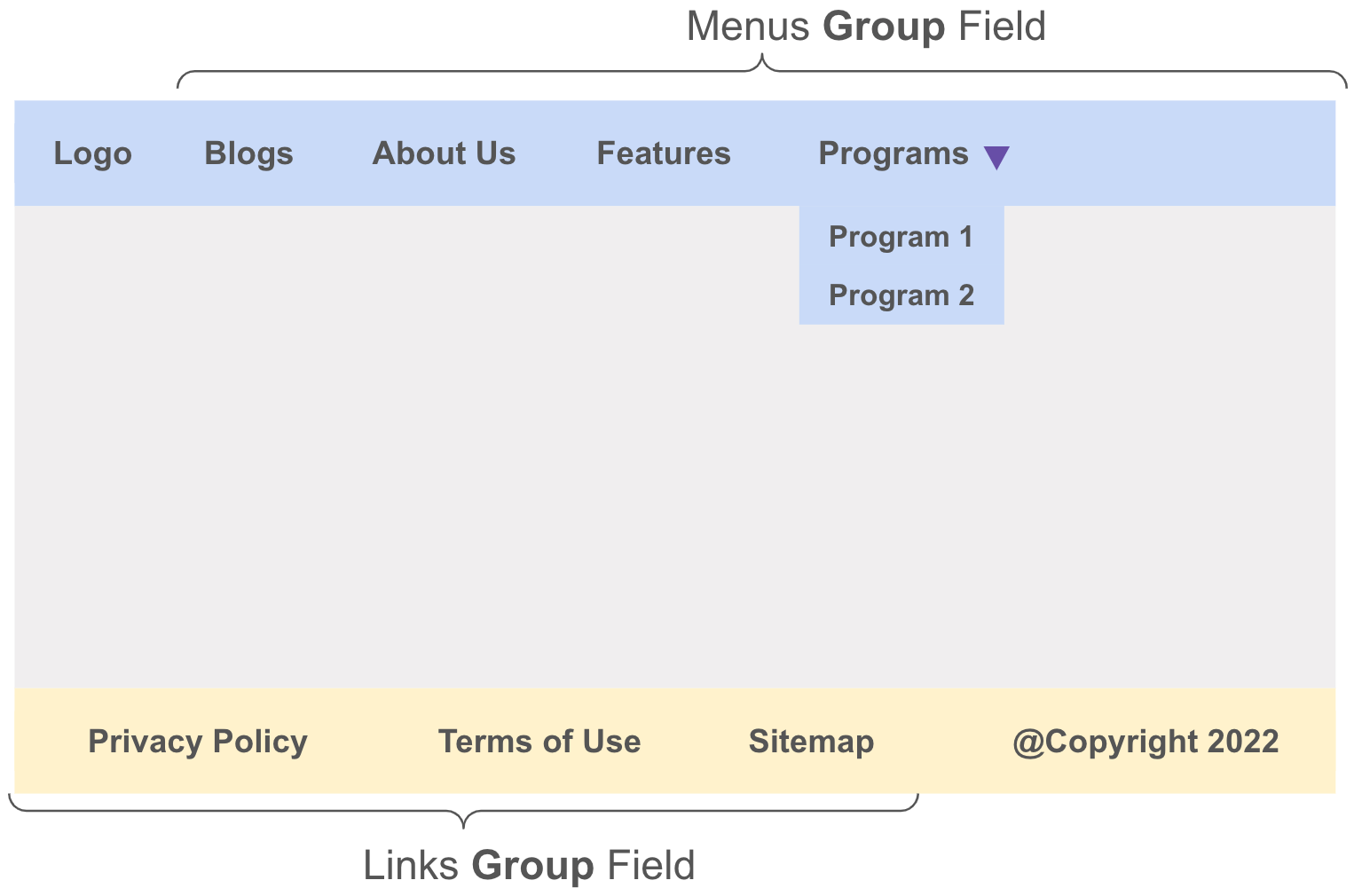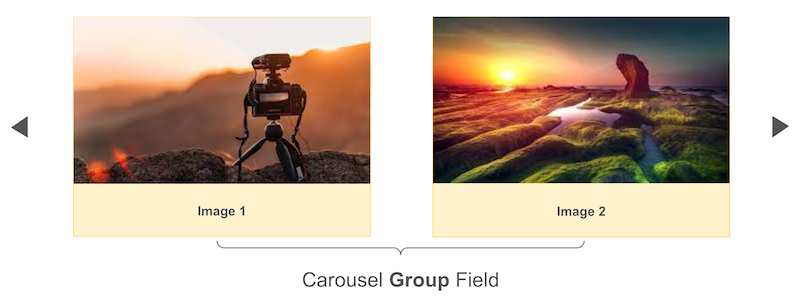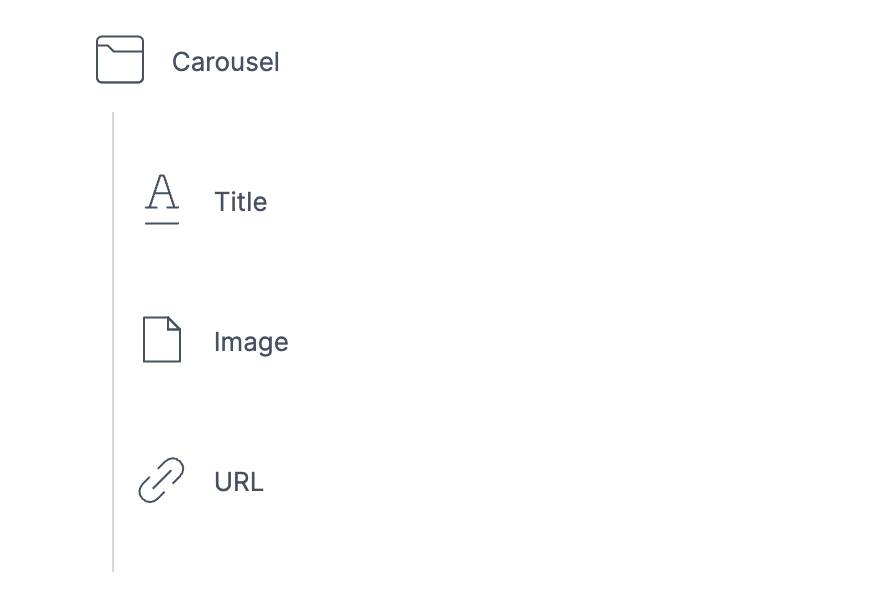Group Fields
Contentstack's group fields are a valuable feature that enables you to bundle related fields within a content type, promoting a more organized and structured content model. For instance, in a menu, grouping navigational links with titles and URLs simplifies the content structure. Instead of managing individual fields for each menu item, you can efficiently manage all components as part of a cohesive group. This enhances content management and allows for more efficient content editing and updates.

In this lesson, we will explore the power of Contentstack group fields for organizing content. These fields offer encapsulation, layout control, and maintain data consistency, enhancing content management and improving readability. However, we'll also address potential challenges, including complexity, data integrity, versioning, and content entry issues. By understanding best practices and overcoming challenges, you can efficiently leverage group fields for a more structured and streamlined content creation process.
The Power of Group Fields for Organizing Content
Contentstack's group fields offer encapsulation for related fields, simplifying the editing interface. They provide layout control, ensuring a consistent and visually appealing content editing experience. With group fields, you maintain data consistency, avoid missing or incomplete data, and create an organized content structure. This enhances content management and improves readability, streamlining content creation and editing processes for efficient workflows.

Here are some reasons why you would use a group field:
Encapsulation: Group fields provide encapsulation by grouping related fields within a collapsible section. This can help simplify the editing interface for content editors, allowing them to focus on specific sections without overwhelming them with a long list of individual fields.
Layout Control: Group fields offer control over the layout and presentation of fields within the group. You can define the order, arrangement, and styling of the fields within the group to ensure a consistent and visually appealing content editing experience.
Data Consistency: Group fields promote data consistency by ensuring that fields within a group are always present and associated with each other. This helps maintain the integrity and consistency of the content structure and avoids missing or incomplete data.
Organized Content: Group fields allow you to categorize related content together, creating a more organized and structured content management experience.
Improved Readability: By grouping fields, you can present content in a clear and logical manner, making it easier for content editors to understand and manage.
Efficient Content Entry: Group fields reduce clutter on the content entry interface, streamlining the content creation process and enhancing productivity.
Modular Content Creation: With group fields, you can create reusable content modules that can be easily replicated and used across multiple entries.
Better Collaboration: Grouping fields based on content sections promotes better collaboration between content creators and developers, ensuring seamless integration.
Consistency and Standardization: Using group fields encourages consistent formatting and styling, maintaining brand guidelines throughout your content.
Scalability: Group fields facilitate the addition of new content sections without affecting the overall content structure, making your content management system more scalable.
Enhanced User Experience: Well-organized content, achieved through group fields, leads to a better user experience as information is presented more coherently.
Simplified Content Maintenance: By grouping related fields, you can update multiple content sections simultaneously, saving time and effort during content maintenance.
Future-Proofing: Group fields provide a flexible approach to content organization, ensuring adaptability to future changes and content requirements.
By using group fields in Contentstack, you can create a well-organized and structured content model, enhance content editing experiences, and ensure data consistency across your content entries.
Practical Group Field Applications
From e-commerce product details and event listings to employee profiles and travel destinations, leverage group fields to organize content seamlessly. Whether creating recipe pages, real estate listings, customer testimonials, or FAQ sections, group fields enhance the content structure for better user experiences. Additionally, group fields prove valuable for showcasing service offerings and organizing educational course modules, promoting streamlined and efficient content creation.

Read further to discover some practical applications of the group field:
E-commerce Product Details: In an e-commerce website, you can use group fields to organize product details such as product name, price, description, images, specifications, and customer reviews. This enables content editors to manage product information more efficiently.
Event Listings: When managing event listings on a website, group fields can be used to organize event details, including event title, date, time, location, description, featured image, and related links.
Employee Profiles: In a company's website, group fields can be utilized to structure employee profiles, grouping information like name, job title, bio, contact details, and social media links for each employee.
Travel Destinations: When creating a travel website, group fields can be employed to organize information about different travel destinations, including location, attractions, activities, images, and travel tips.
Recipe Pages: For a food blog or recipe website, group fields can help structure recipe pages by organizing ingredients, cooking instructions, preparation time, serving size, images, and related recipes.
Real Estate Listings: In a real estate website, group fields can be used to manage property listings, grouping details such as property type, location, price, description, images, and contact information.
Customer Testimonials: When showcasing customer testimonials on a website, group fields can be used to organize details like customer name, testimonial content, rating, and location.
Frequently Asked Questions (FAQ): Group fields can be beneficial for organizing FAQ sections on websites, grouping questions, answers, and categories for easy navigation.
Service Offerings: For a services-oriented website, group fields can be used to structure information about different services offered, including service description, pricing, features, and service providers.
Educational Course Modules: In an e-learning platform, group fields can be utilized to organize course modules, grouping content such as lessons, quizzes, multimedia elements, and progress tracking.
In this lesson, we've explored real-world scenarios where group fields shine. From e-commerce products and event listings to employee profiles and travel destinations, group fields streamline content management and enhance user experiences. Utilize group fields to optimize your website's content structure and empower your content creation process.
Understanding Group Field Challenges
In this section, we will explore common challenges faced when using group fields in content management. From complexity and data integrity issues to versioning challenges and content entry complexity, understanding these potential hurdles is crucial for optimizing your content structure
Issues that may arise when using group fields:
Complexity and Learning Curve: Using group fields may introduce complexity, especially for non-technical content editors, requiring additional training and time to become familiar with the new structure.
Content Duplication: Group fields might lead to content duplication if certain information needs to be repeated across multiple groups, potentially causing inconsistencies and maintenance challenges.
Dependency Management: Group fields' interdependencies may become complex, especially when multiple groups are interconnected, making it challenging to manage updates and changes.
Versioning Challenges: Handling version control for group fields and their nested content can be more intricate, especially when different versions of content refer to different versions of the group.
Data Integrity Issues: Improper handling of group fields can lead to data integrity problems, causing errors and inconsistencies in content rendering.
Performance Impact: Group fields with nested content can have a performance impact, affecting content retrieval and rendering speed.
Content Entry Complexity: Content entry may become more complex when dealing with multiple nested groups, making it challenging for content editors to navigate and input data accurately.
Synchronization Difficulties: Managing synchronization between group fields and their associated entries can become problematic when updating references or relationships.
Data Migration: When migrating content between different systems or platforms, handling group fields and nested content may require additional effort and consideration.
Dependency on Content Structure: Over time, the website or application's content structure may evolve, leading to dependencies on group fields that may require adjustments and updates to maintain functionality.
Limitation of Group Field Types: There may be limitations on the types of fields that can be included in a group, potentially restricting content editors' desired content organization.
We discovered that while group fields offer benefits such as encapsulation, layout control, and organized content, they also come with challenges. Addressing complexity, data integrity, versioning, and content entry complexities is essential.
Best Methods for Group Fields Management
In this lesson, we explored best practices for using Contentstack group fields effectively. Comprehensive training, clear guidelines, and version control ensure data integrity. Adhering to these best practices ensures a more streamlined and efficient content creation process while minimizing potential challenges.
Consider implementing the following best practices:
Comprehensive Training: Provide comprehensive training to content editors to familiarize them with group fields' structure, usage, and potential complexities.
Clear Content Guidelines: Establish clear content guidelines to minimize content duplication and ensure consistent use of group fields throughout the content stack.
Version Control and Review Process: Implement a version control system and establish a review process for changes made to group fields and their associated content.
Data Validation and Error Handling: Set up validation rules and error handling mechanisms to ensure data integrity within group fields and prevent content entry errors.
Performance Optimization: Optimize the usage of group fields and their nested content to minimize any potential performance impact on content retrieval and rendering.
Simplify Nested Structures: Keep group field structures as simple as possible to reduce complexity and make it easier for content editors to manage content.
Effective Communication: Foster open communication between content editors, developers, and administrators to address any issues or challenges with group fields promptly.
Content Entry Tools: Provide user-friendly interfaces and tools that streamline content entry and make it easier for content editors to navigate and input data accurately.
Testing and QA: Conduct thorough testing and quality assurance to identify and resolve any synchronization difficulties or data migration issues.
Documentation and Training Materials: Create detailed documentation and training materials that cover group field usage, best practices, and troubleshooting guidelines.
Regular Audits: Periodically audit the usage of group fields and their associated content to ensure consistency and proper organization.
By adhering to these best practices, you can optimize the use of Contentstack group fields, enhance content management, and minimize potential challenges, ensuring a smoother and more efficient content creation process.
Example: Utilizing Group Fields for Image Carousels

An image carousel is an excellent example of using group fields in Contentstack due to its inherent need for multiple items with consistent properties. Group fields allow you to group related fields together within a single entity, making them ideal for organizing and managing the properties of each individual item in the carousel. The group allows for multiple items and contains the properties needed for each individual item (Title, Image, URL) within the carousel.
 Walkthrough: Implementing a Multimedia Group Field in Contentstack for a News Portal's Article Layout
Walkthrough: Implementing a Multimedia Group Field in Contentstack for a News Portal's Article LayoutObjective: Learn how to use a Group Field in Contentstack to seamlessly integrate multimedia elements within a news article for an online news portal.
Scenario: You're enhancing the digital layout for an online news portal. To make articles more engaging, you want to embed related multimedia elements, such as images, videos, and their respective captions, within each article.
Step 1: Access the 'News Article' Content Type
Navigate to your Contentstack dashboard.
Click on "Content Models."
Locate and select the existing "News Article" content type.
Step 2: Implementing the Multimedia Group Field
Within the "News Article" content type, click on "Add Field."
Select "Group" from the list of available fields.
Name the group "Embedded Multimedia."
Step 3: Structuring the 'Embedded Multimedia' Group
Within the "Embedded Multimedia" group, add the following fields:
File field for "Related Image" or "Embedded Video."
Single Line Textbox for "Media Caption."
Single Line Textbox for "Media Source" or "Credits."
Step 4: Save and Test
After setting up the group and its fields, save the content type modifications.
Navigate to the "Entries" section, select a "News Article" entry, and fill in the multimedia details to see how the group field enhances the content entry process.
Conclusion: By integrating a Multimedia Group Field in Contentstack for the "News Article" content type, "Global Insights" articles are now enriched with engaging multimedia elements. This ensures a dynamic reading experience, capturing the reader's attention and providing additional context to the story.
This walkthrough offers a focused approach to enhancing a news article layout with multimedia elements using Contentstack's Group Field.
Module Summary: Group Field Benefits and Challenges
In this lesson, we've delved into the versatility of Contentstack group fields for organizing content effectively. These fields offer numerous benefits, including encapsulation, layout control, and data consistency, leading to enhanced content management and improved user readability. However, we've also discussed potential challenges, such as complexity and data integrity issues. By adhering to best practices and leveraging group fields, you can create a well-organized content model, optimize your content structure, and simplify the content creation process. Embracing group fields empowers you to achieve seamless collaboration and a more efficient user experience.
Learn more
Optional Exercise: Enhancing the 'Supplier' Content Type with a 'Partnership Details' Group Field in Contentstack
Objective: Learn how to use Group Fields in Contentstack to further structure and organize the existing supplier details.
Scenario: You're tasked with refining the 'Supplier' content type. The content type already has fields for the supplier's name, contact information, and logo. Now, you want to group some new fields that capture the nature and details of the partnership between your company and its suppliers.
Step 1: Accessing the 'Supplier' Content Type
Navigate to your Contentstack dashboard.
Locate and select the existing 'Supplier' content type.
Step 2: Implementing Group Fields
Click on "+ Add Field" and select "Group" from the list of available fields.
Step 3: Setting Up 'Partnership Details' Group
Name the group "Partnership Details."
Add a "Date" field labeled "Partnership Start Date" to capture when the partnership began.
Add a "Dropdown" field labeled "Partnership Type" with options like "Exclusive," "Non-exclusive," and "Trial Basis."
Include a "Boolean" field labeled "Renewal Due" to indicate if the partnership is up for renewal.
Add a "Number" field labeled "Annual Volume Commitment" to capture the agreed-upon volume of products or services.
Include a "Rich Text Editor" field labeled "Terms and Conditions" to detail the specifics of the partnership agreement.
Step 4: Save and Test
After setting up the group and adding the new fields, save the changes to the 'Supplier' content type.
Edit an existing entry under 'Supplier' or create a new one to see how the grouped fields and new additions enhance the content entry process.
Conclusion: By introducing the 'Partnership Details' Group Field in the 'Supplier' content type, we've provided a structured way to capture the nuances of the business relationship between the company and its suppliers. This ensures a more organized and detailed representation of each supplier's profile, aiding in better partnership management and decision-making.
Next Up
Article
Global Fields
6m 35s
